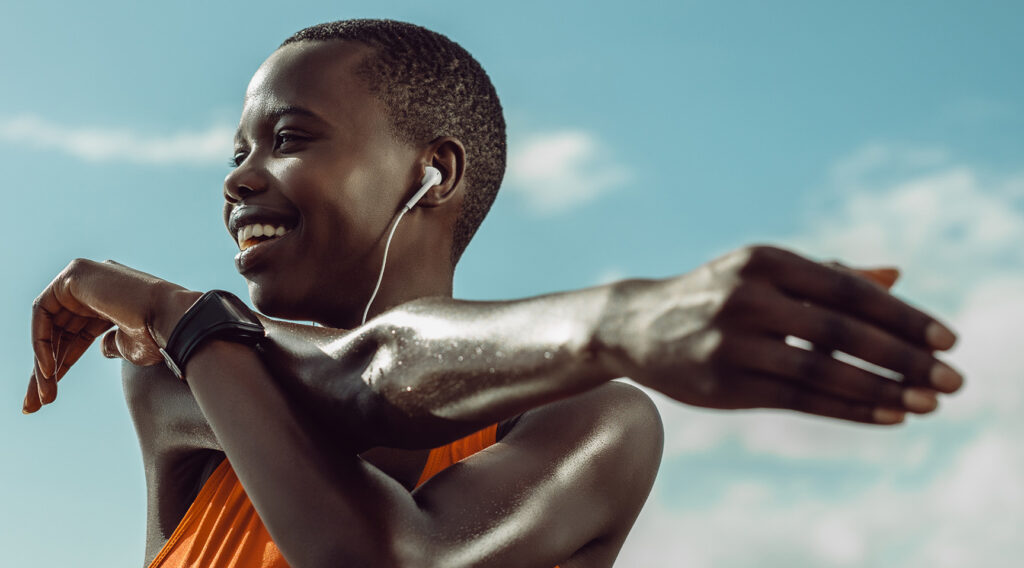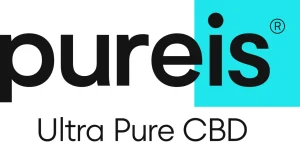CBD topical balm for muscle recovery: Could CBD be your new training partner?
Cooling down after exercise helps with muscle recovery, but could a CBD topical balm help too? We discuss CBD’s effect on the body post-workout and top tips for a more effective training regime.

There are many physical and mental health benefits gained through regular exercise with current recommendations suggesting we should aim to do at least 150 minutes of moderate exercise per week, or 75 minutes of something more rigorous.1
Movement, whether that’s a walk, run, swim, cycle or gym workout etc. helps to maintain and improve our fitness, moderate our mood, and create a more positive outlook on life. If you’re wonderinghow to help speed up muscle strain recovery or are looking for general post-exercise advice, please continue reading.
Warming up and warming down
Warming up prior to a workout is recommended as it can reduce risk of injury, improve performance, increase blood flow, enhance flexibility, and help your mental preparation. It also ensures that the body isn’t put into an imbalance when activity suddenly increases. The warm-down is also important, and whether it’s due to life pressures or time constraints, many of us neglect to properly recalibrate our bodies after exercise, and this can have annoying repercussions. For example, muscle soreness and tightness which in turn delays recovery and then limits our ability to do further exercise.
What helps muscle recovery?
Following intense or even moderate physical activity, our bodies are operating at a higher temperature and with an increased heart rate. Additionally, our muscles have built up lactic acid as they have been operating with less oxygen. This could have a knock-on effect, making you less inclined to exercise in future, so a sensible warm-down is a must.
If we prepare the body for the change in tempo post-exercise, we can guide our body back to a stable baseline. Light aerobic exercise will assist the body in delivering oxygen to muscles to reduce the lactic acid there, whilst static stretches will add additional relaxation to muscles and return them to more balanced movement.
How can CBD topical balm help with a post-exercise routine?
Though the science is still in its infancy on the benefits of massaging a moisturising CBD balm for recovery, initial data suggests that it could help play a role in easing the body back to regular functioning. Massage therapy has been widely studied for its potential benefits in sports and exercise recovery. Massage may help reduce muscle soreness associated with delayed onset muscle soreness (DOMS)2.
Studies show that CBD might assist with homeostasis3. In other words, bringing the body back to its natural state. Homeostasis is a goal of exercise recovery, and there are signs from the scientific community that CBD has an influence on the information exchange between our endocrine, exocrine, and nervous systems4. Communication between these systems enables us to rebalance as they feed back to one another to regulate all the processes that are affected when exercising.
Muscle tightness
Our muscular system is put under pressure when we work out and, post-exercise, our muscles are likely to feel tight. The burden put upon our muscles during a period of more intense physical exercise can cause them to become inflamed as they work with less oxygen and with increased activity. Massage therapy has shown potential benefits for muscle oxygenation and recovery. Massage therapy applied after exercise-induced muscle damage activated pathways, that promoted muscle regeneration and reduced inflammation 5.
The introduction of CBD into this equation may be helpful, as studies have shown that CBD interacts with the body’s endocannabinoid system (ECS). The ECS promotes blood circulation,6 helps reduce inflammation7 and helps prevent spasms8. There’s also some evidence that massaging a CBD balm to an area of tightness can support recovery, which has led to people considering using CBD balm as an alternative approach for helping with recovery 9.
When and how should I take CBD?
Everyone is unique, so there’s no set way to take CBD. CBD comes in many formats, from capsules that can be taken orally, to oil sprays, drops and balms.
Before considering making it part of your routine, it’s best to speak to your doctor or a healthcare professional. They can advise you on how to help muscle recovery. If you’d like to further understand about CBD in general, please do learn more at www.pureiscbd.com.
Pureis is not intended to treat or prevent any physiological or psychological disease.
Footnotes
1, Public Health England. (n.d.). Health matters: Getting every adult active every day. GOV.UK. Retrieved August 9, 2024, from https://www.gov.uk/government/publications/health-matters-getting-every-adult-active-every-day
2, Moraska, A. (2005). Sports massage: A comprehensive review. Journal of Sports Medicine and Physical Fitness, 45(3), 370-380.
3, Ständer, S., Moormann, C., Schumacher, M., & Metze, D. (2014). TRP channel cannabinoid receptors in skin sensation, homeostasis, and inflammation. ACS Chemical Neuroscience, 5(11), 1107-1116. https://pubs.acs.org/doi/full/10.1021/cn5000919
4, Suraev, A., Lintzeris, N., Stuart, J., Vaillancourt, L., Genovesi, S., Arnold, J. C., & McGregor, I. S. (2023). Use of cannabidiol in the management of insomnia: A systematic review. Cannabis and Cannabinoid Research, 8(2), 213-229. https://doi.org/10.1089/can.2022.0122
5, Modulating the endocannabinoid system in human health and disease – successes and failures – Pacher – 2013 – The FEBS Journal – Wiley Online Library
6, Crane, J., Ogborn, D., Cupido, C., Melov, S., Hubbard, A., Bourgeois, J., & Tarnopolsky, M. (2012). Massage therapy attenuates inflammatory signaling after exercise-induced muscle damage. Science Translational Medicine, 4(119), 119ra13.
7, Pacher, P., & Kunos, G. (2013). Modulating the endocannabinoid system in human health and disease – successes and failures. The FEBS Journal, 280(9), 1918-1943. https://doi.org/10.1111/febs.12260
8, Burstein, S. (2015). Cannabidiol (CBD) and its analogs: A review of their effects on inflammation. Bioorganic & Medicinal Chemistry, 23(7), 1377-1385. https://doi.org/10.1016/j.bmc.2015.01.059
9, Notcutt, W., Price, M., Miller, R., Newport, S., Phillips, C., Simmons, S., & Sansom, C. (2004). A preliminary controlled study to determine whether whole-plant cannabis extracts can improve intractable neurogenic symptoms. Clinical Rehabilitation, 18(1), 84-94. https://doi.org/10.1191/0269215504cr749oa
10, Xu, D. H., Cullen, B. D., Tang, M. M., & Fang, Y. (2020). The effectiveness of topical cannabidiol oil in symptomatic relief of peripheral neuropathy of the lower extremities. Current Pharmaceutical Biotechnology, 21(5), 390-402. The Effectiveness of Topical Cannabidiol Oil in Symptomatic Relie…: Ingenta Connect
11, Caterina, M. J. (2014). TRP channel cannabinoid receptors in skin sensation, homeostasis, and inflammation. ACS Chemical Neuroscience, 5(11), 1107-1116. https://doi.org/10.1021/cn5000919


2 comments
Comments are closed.